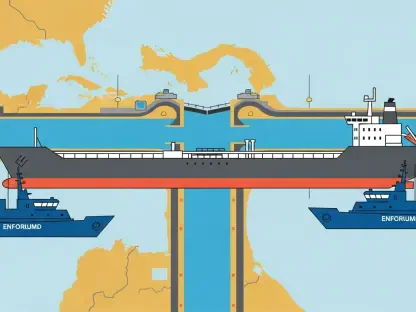Setting the Stage: A High-Stakes Oil Partnership in the Sahel
In the arid expanse of Niger, a nation rich in resources yet grappling with systemic poverty, the oil sector stands as a beacon of economic potential, drawing significant international interest. China National Petroleum Corporation (CNPC), a dominant player in this landscape, has propelled Niger into the global crude market with investments surpassing $5 billion. However, beneath the surface of this success lies a brewing conflict with the country’s military junta over labor policies and local hiring mandates. This market analysis examines the delicate balance CNPC must strike between maintaining robust oil exports and addressing Niger’s pressing demands for workforce localization and equitable benefits. By dissecting current trends, operational data, and geopolitical dynamics, this exploration aims to uncover whether CNPC can navigate these challenges while sustaining its pivotal role in Niger’s burgeoning oil economy, offering critical insights for stakeholders in resource-rich, politically volatile regions.
Deep Dive into Market Dynamics: Trends, Data, and Projections
Operational Triumphs: CNPC’s Infrastructure and Export Milestones
CNPC’s footprint in Niger’s oil market is nothing short of transformative, with infrastructure projects that include the expansive Agadem oilfield and Africa’s longest pipeline stretching 1,950 km to Benin’s Cotonou port. The phase-2 expansion of Agadem has elevated production to a steady 90,000 barrels per day, a significant leap from earlier outputs. To date, over 32 million barrels of Meleck crude have been exported, generating revenues exceeding $2 billion at prices ranging from $65 to $70 per barrel. These figures underscore CNPC’s operational prowess, positioning Niger as a notable player in global oil markets with buyers spanning Europe and Asia, facilitated by CNPC’s trading arm, Chinaoil, alongside international trading houses. This robust export activity highlights a market ripe with opportunity, yet it also sets the stage for underlying tensions that could impact long-term stability.
Labor Disputes: A Barrier to Sustainable Growth
Despite these achievements, the Nigerien government’s push for localization presents a formidable challenge to CNPC’s operations. The junta’s mandate to achieve an 80% local workforce in the oil sector starkly contrasts with the current reality of less than 30% local hires, driven by a critical shortage of skilled labor within the country. This policy, while aimed at ensuring economic benefits reach Nigerien citizens, clashes with CNPC’s need for operational efficiency, often reliant on expatriate expertise. Incidents such as the expulsion of three senior CNPC executives earlier this year over pay disparities between local and foreign workers further illustrate the depth of discontent. If unresolved, this friction could lead to operational delays or cost increases, potentially dampening investor confidence in Niger’s oil market over the coming years.
Geopolitical Pressures: Resource Nationalism Reshaping the Landscape
Adding another layer of complexity is the geopolitical environment in the Sahel, where resource nationalism has gained momentum following recent political shifts. Niger’s military leadership, in power since a coup two years ago, views oil as a cornerstone for national development, pushing to renegotiate terms with foreign investors like CNPC. This trend mirrors actions in neighboring countries such as Mali and Burkina Faso, where governments have similarly sought greater control over natural resources. Market analysts predict that failure to align with localization goals could invite stricter regulations or even nationalization risks for CNPC, impacting the predictability of Niger’s oil sector. Such dynamics suggest that foreign entities must adapt to a landscape where national interests increasingly dictate market conditions, a factor that could redefine investment strategies across the region.
Future Outlook: Balancing Export Goals with Local Demands
Looking ahead, projections for Niger’s oil market hinge on CNPC’s ability to address labor challenges without compromising export volumes. Technological investments in local training programs could gradually bridge the skills gap, enabling a higher proportion of Nigerien hires over a phased timeline. Economically, sustained revenues from Agadem exports provide a potential funding source for education and vocational initiatives, creating a virtuous cycle of capacity building. However, regulatory uncertainties loom large, with the possibility of harsher quotas or penalties if progress stalls. Industry forecasts suggest a hybrid operational model—combining expatriate know-how with accelerated local integration—may emerge as a viable path, potentially stabilizing CNPC’s market position while aligning with national priorities through at least 2027.
Reflecting on the Path Forward: Strategic Implications and Recommendations
Looking back, the analysis of Niger’s oil market reveals a complex interplay of operational success and socio-political challenges that have shaped CNPC’s journey. The remarkable export figures and infrastructure milestones stand in stark contrast to the persistent labor disputes and geopolitical pressures that test the partnership with Niger’s government. For stakeholders, the key takeaway is the necessity of adaptability in volatile markets where national interests can swiftly alter the playing field. Moving forward, CNPC is encouraged to prioritize investments in local workforce development as a long-term strategy to mitigate localization conflicts. Simultaneously, fostering transparent dialogue with Nigerien authorities to address pay inequities emerges as a critical step to rebuild trust. For other foreign investors eyeing resource-rich regions, Niger’s experience offers a blueprint: integrating community benefits into core business models proves essential to ensure sustainable operations amidst rising nationalistic policies.









